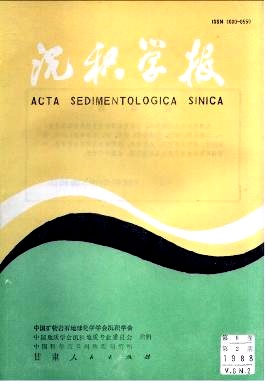FOSSIL MARKS OF ANCIENT STORM DEPOSITS
- Publish Date: 1988-06-10
Abstract: Ancient storms affected both sediments and organisms and left some special marks on the fossils, which are useful to us to identify the ancient storm deposits. The main marks are listed as follows: 1. The heavy skeleton blocks of the organisms, which lived in the deeper water environments, were transported and mixed with the shallower water biocoenosis. These phenomena usually occurred near the facies change zone. 2. The big masses of the organisms, living in native places, were overthrown and kept in an unstable position. 3. The infauna shells were digged out and mixed with the epifauna shells. All shells preserved in very poor chosen condition. 4. The large frameworks of the organisms, which built wave-resistive structures, were broken and their fragments with sharp edges kept nearby the structures. 5. The layers of encrusting organisms were torn and some upward gaps were formed on it. 6. Numerous broken branches and complete skeletons of the same dendritic organisms accumulated together in their native places. The broken branches were preserved in unworn and unchosen condition. 7. The upset productids with two complete concavo-convex shells were preserved together with the same kind of shells, keeping in their growing positions. 8. Many single corals bent into some marked angles. An angle indicated one of the storms happend during the growing processes of these corals. 9. More or less complete calyxes and long stems of crinoids were preserved with the skeletons of other organisms, which were broken by waves. 10. Numerous small shells accumulated on the top of the layer consisting of larger fossils and showed the positive graded bedding. These small shells only belong to few species. As listed above, the fossil marks of ancient storm deposits are various and sometimes very similar to some phenomena caused by other agencies, such as ordinary waves, tides, bottom currents, turbidity currents and so on. This paper also discusses the differences between them. But, it is still necessary to consult the sedimentological evidences, when these fossil marks are used,
| Citation: | Liu Zuhan. FOSSIL MARKS OF ANCIENT STORM DEPOSITS[J]. Acta Sedimentologica Sinica, 1988, 6(2): 118-122. |






 DownLoad:
DownLoad: